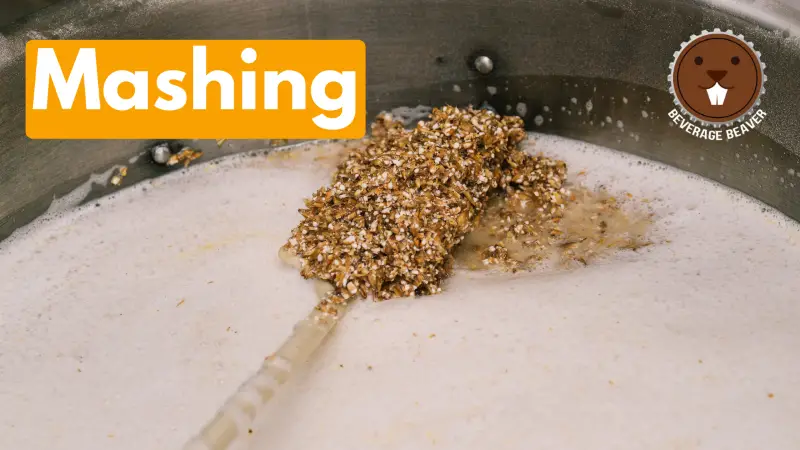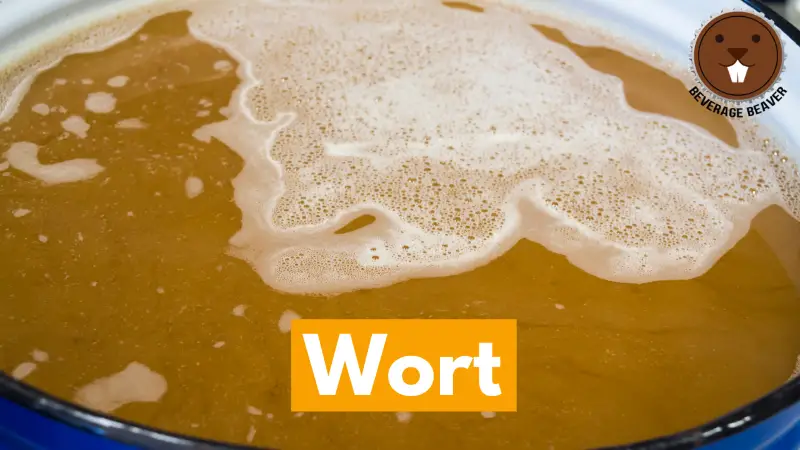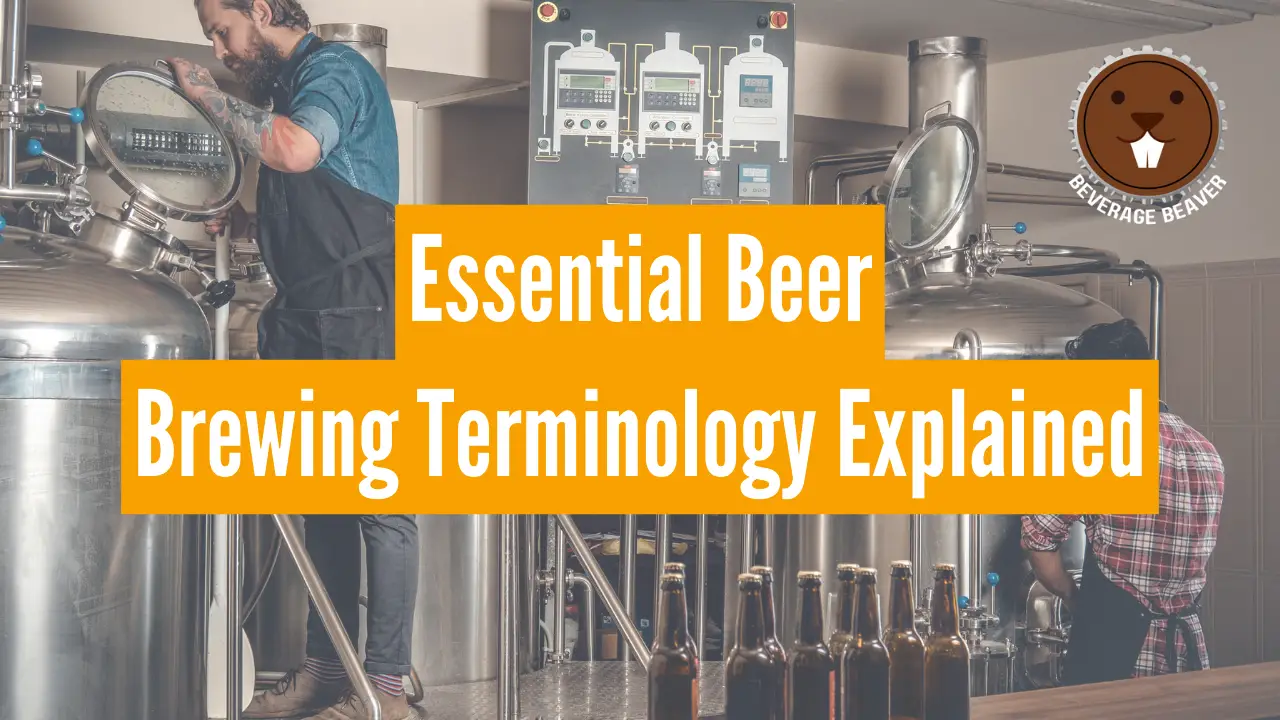Mashing, Wort, Lautering, And Sparging | A Guide To Key Terminology For Aspiring Beer Brewers
If you’re diving into the world of beer brewing, whether as a hobbyist or an aspiring brewmaster, navigating the intricate terminology can often be one of the biggest challenges. In this guide, we’ll demystify some of the essential brewing terms, breaking down concepts like ‘mashing’, ‘wort’, ‘lautering’, ‘sparging’, and more, to help you gain a clearer understanding of the brewing process.
What Is ‘Mashing’ In Beer Brewing?

In the context of beer brewing, mashing is the process of converting the starches in malted grains into fermentable sugars. This transformation occurs when the grains are soaked in hot water, allowing enzymes to break down complex starches into simpler sugars.
Mashing isn’t just a step in the brewing process; it’s a fundamental cornerstone that dictates several attributes of the final beer. The initial mash determines:
- Flavor: The types and proportions of sugars produced can influence the beer’s sweetness, body, and overall malt character.
- Color: The duration and temperature of the mash can alter the beer’s hue, making it anywhere from pale gold to rich brown.
- Alcohol Content: The efficiency of the mashing process can affect the quantity of fermentable sugars available, which in turn influences the potential alcohol content of the beer.
What Is ‘Wort’ In Beer Brewing?

Wort is the sugary liquid extracted from the mashing process. Think of it as the precursor to beer: it’s what beer is before it’s beer. Wort contains the sugars, flavors, and nutrients essential for yeast fermentation, which eventually produces alcohol and carbonation.
The wort is pivotal because it represents the canvas upon which all subsequent brewing actions take place. Yeast ferments the sugars in the wort, creating both the alcohol and the wide array of flavors and aromas characteristic of beer. Its quality and composition will directly influence the final taste, aroma, and mouthfeel of the beer.
What Is ‘Lautering’ In Beer Brewing?
Lautering is the process of separating the liquid wort from the solid grain material after mashing. It’s an essential step in beer production, ensuring that brewers obtain a clear liquid that’s ready for boiling and fermentation, leaving behind the grain husks and other solid residues.
The primary goal of lautering serves a dual purpose: it aims to effectively extract the liquid wort, which is rich in dissolved sugars and other vital compounds for brewing, while simultaneously leaving behind grain solids. This separation ensures efficiency in the subsequent brewing steps and prevents the final beer from acquiring any undesirable grainy flavors.
What Is ‘Sparging’ In Beer Brewing?
Sparging, often regarded as the final act in the mashing process, is essential for optimizing the extraction of fermentable sugars from the grain bed. It involves rinsing the spent grains after lautering to recover the remaining sugary wort. This step ensures brewers make the most out of their grains, maximizing yield and efficiency.
As the lautering process separates the initial wort from the grain solids, some sugars inevitably remain trapped within the grain bed. This is where sparging comes in. By sprinkling or pouring hot water over the grain bed, brewers can dissolve and wash out these residual sugars, ensuring that they are not wasted and instead contribute to the beer’s gravity and flavor.
What Are Hops In Beer Brewing?

Hops are the cone-shaped flowers of the Humulus lupulus plant. These green, aromatic blossoms are one of the four core ingredients in beer production, alongside water, malt, and yeast.
Hops have been intertwined with the history of beer brewing for centuries, adding more than just flavor to the brew. They play several crucial roles in beer production:
- Bittering: The primary purpose of adding hops to beer is to balance the sweetness of the malt. Hops contain alpha acids, and when boiled, these acids undergo a process called isomerization, which imparts the characteristic bitterness to beer. The level of bitterness a beer has is often measured in International Bitterness Units (IBUs), with higher IBU values indicating more bitterness.
- Flavor and Aroma: Different hop varieties offer a vast range of flavors and aromas, from piney, resinous, and earthy to citrusy, fruity, and floral. The timing of hop additions during brewing can dictate whether they contribute more to the beer’s bitterness, flavor, or aroma. Hops added earlier in the boil generally contribute to bitterness, while those added later or even post-boil (during a phase called “dry hopping”) emphasize flavor and aroma.
- Preservation: Historically, one of the primary reasons for using hops was for their preservative qualities. Hops have natural antimicrobial properties, which helped to extend the shelf life of beer in times before pasteurization and refrigeration.
- Stabilizing the Beer: Hops aid in beer stabilization, reducing the risk of unwanted off-flavors or haziness. This results in a clearer beer with a longer shelf life.
- Enhancing Mouthfeel: Certain compounds in hops can interact with proteins from the malt, impacting the beer’s body and mouthfeel. This interaction can lead to a smoother or fuller drinking experience.
What Is ‘Fermentation’ In Beer Brewing?
Fermentation is the metabolic process where yeast, a type of fungi, converts sugars present in the wort into alcohol and carbon dioxide. It’s a transformative stage in beer production, where the sugary liquid becomes an alcoholic beverage.
When brewers talk about fermentation, they’re referring to the magic orchestrated by yeast. After the mashing, lautering, and boiling phases, where the wort is prepared and infused with flavors from the hops, it’s the yeast’s turn to play its pivotal role.
The primary goal of fermentation in beer brewing is the production of alcohol. Yeast consumes the fermentable sugars from the wort, producing ethanol (alcohol) as a byproduct. This is what gives beer its alcoholic content. The amount of alcohol produced varies depending on the yeast strain, fermentation duration, temperature, and the initial sugar concentration in the wort.
While alcohol production might be the primary aim, fermentation also introduces a myriad of flavors and aromas. Esters, phenols, and other compounds produced during fermentation can impart notes ranging from fruity and spicy to buttery and sour. The specific yeast strain chosen by the brewer can dramatically influence a beer’s profile.
What Is ‘Trub’ In Beer Brewing?
Trub (pronounced “troob”) refers to the sediment or slurry composed of residual yeast, hop particles, grain fragments, and protein coagulates that settle at the bottom of the fermentation vessel after the boiling and cooling phases of brewing.
In the dynamic journey of transforming malted grains into a delectable beer, there are inevitable byproducts. One such byproduct is trub, a muddled mixture that might seem like waste but plays an intriguing role in the brewing process.
There are two main types of trub: Hot Trub and Cold Trub. Hot trub forms after the boil and consists primarily of proteins, hop residue, and other solid particles that coagulate during this heating phase. Cold trub forms after the wort is cooled and is about to be pitched with yeast. It mainly consists of proteins and other compounds that become insoluble at cooler temperatures.
What Is ‘Clarifying’ In Beer Brewing?
Clarifying refers to the process of refining and purifying beer to remove suspended solids, yeast, proteins, and other particulates, resulting in a clearer, more transparent beverage with a polished appearance and reduced risk of off-flavors.
A cloudy or hazy beer might be perfectly acceptable for specific beer styles like New England IPAs or Hefeweizens. However, for many other styles, clarity is a sought-after quality, symbolizing purity and precision in brewing.
Clarifying isn’t just about aesthetics. Suspended particles, if left unchecked, can lead to unwanted flavors or reduce the beer’s shelf life. The methods and timing of clarification can vary, but the overarching goal is to remove undesired elements while preserving the beer’s inherent flavors and qualities.
What Is ‘Priming’ In Beer Brewing?
Priming is the process of adding a sugar solution to beer just before packaging to induce a secondary fermentation. This secondary fermentation produces carbon dioxide, naturally carbonating the beer in its final container, be it a bottle, keg, or cask.
To achieve the desired carbonation and effervescence that many beer enthusiasts cherish, brewers often turn to the method of priming. This process not only endows the beer with bubbles but can also refine its overall character.
When yeast consumes sugar, it produces alcohol and carbon dioxide. During the primary fermentation phase, most of the CO2 escapes from the fermentation vessel. Priming harnesses this yeast activity in a controlled environment, usually within the sealed confines of a bottle or keg, ensuring that the CO2 generated has nowhere to go and thus gets dissolved into the beer.
Wrapping Up
Diving into the realm of beer brewing can initially feel overwhelming, thanks to its rich lexicon. However, with this guide unpacking essential terms such as ‘mashing’, ‘wort’, and ‘sparging’, we hope you’re now more at ease with the nuances of the process. Whether you’re a passionate homebrewer or on the path to becoming a professional, this newfound clarity should enhance your brewing experience. Here’s to mastering the craft and savoring every brew you create!

